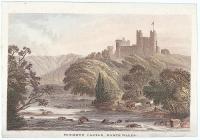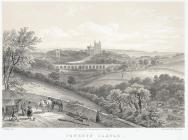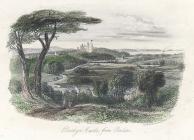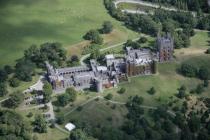Penrhyn Castle
The original manor house on this site dated to the early fifteenth century, a royal license granted in 1438 giving Sir Gwilym Gruffydd permission to crenellate the house and extend the building by adding a fortified tower. Described in a fifteenth century poem by Rhys Goch Eryri, this was a substantial property which was also recorded in drawings made by architect Samuel Wyatt before it was heavily replaced and modified with his designs for a Gothick mansion for the Penrhyn family in 1782. This scheme of work appears to have retained the basement vault, stair tower and great hall from the medieval plan, as well as mirroring the medieval style of the original building.
The present building was created by the architect Thomas Hopper between the years 1822 and 1837 for George Hay-Dawkins Pennant who had inherited the Penrhyn estate from his cousin, Richard Pennant. Pennant himself had married into the Penrhyn family and had subsequently made his fortune through slate quarrying industries in north Wales and slavery in Jamaica.
Unlike other architects of mock castles of the Romantic and early Victorian period, Hopper decided against the fashionable Gothic design and opted for a neo-Norman approach instead. His vision of a Norman style went beyond pure architecture, extending to the elaborate, decorative plasterwork employed throughout the library, great hall and staircases as well as the furniture. Unfortunately, George Hay-Dawkins Pennant lived for only three years after the completion of fifteen years of construction work at the castle.
In 1859, Queen Victoria and Prince Albert stayed the castle during one of their rare visits to Wales. The queen, however, refused to sleep in the large bespoke slate bed that the Penrhyn family had specifically commissioned for this occasion as it reminded her of a tomb. It was also during this time that the estate began to open its gates routinely to groups of paying tourists who were led through the stately rooms and large planned gardens by the housekeeper.
The last member of the Penrhyn family to live in the castle was Hugh Napier Douglas-Pennant, who died in 1949. The castle and gardens passed into ownership of the Treasury in 1951 and today belong to the National Trust. In addition to the surviving fine interior fittings and furniture, it houses one of the greatest art collections in Wales.







